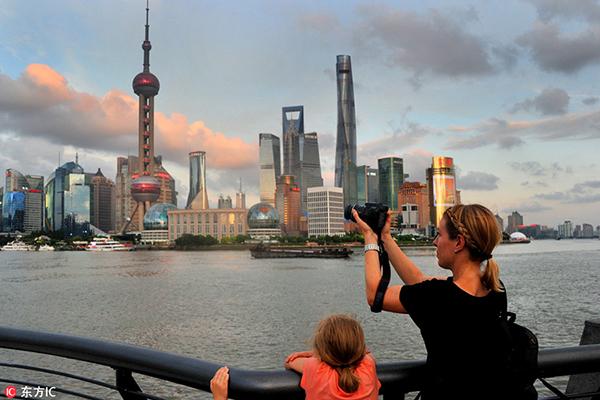BEIJING, Jan. 3 (Xinhua) -- Despite the global economic slowdown and tougher competition to attract capital, Shanghai attracted 18.5 billion U.S. dollars in overseas investment in 2016, marking the 17th consecutive year of growth.
According to official figures released by the Shanghai Municipal Commission of Commerce on Sunday, overseas investments in the city's service sector exceeded 16.3 U.S. billion, a year-on-year increase of 2.5 percent.
Of theses, the rental and business service was the individual segment that attracted most of overseas capital, of more than 4.7 billion U.S. dollars, for year-on-year growth of nearly 70 percent. The growth in overseas capital to the city's financial services, information services, technology research and development and healthcare sectors exceeded 20 percent for the year.
Meanwhile overseas investment in new electronic equipment, new energy and new materials also kept surging. The manufacturing sector attracted over 2.1 billion U.S. dollars in overseas investment.
Shanghai University of Finance and Economics Professor Chen Bo said the global economy continued to suffer from a slowdown, but in the circumstances the mainland remained robust.
"The Chinese market remains strong, with growing demand in a variety of sectors such as financial services and technological research and development," Chen added.
The statistics also showed that 45 multinational corporations launched their regional headquarters in the city in 2016, 15 of which were regional headquarters for the Asia Pacific region, while 18 investment companies were also unveiled.
"More foreign companies arrived to launch their branches or head offices in Shanghai as a major step to entering the Chinese market, as the city attracts more skilled and expert staff and technological innovation," Chen said.
By the end of 2016, the city became home to the regional headquarters of 580 companies, indicating that Shanghai is growing to become the major cluster for regional headquarters of multinational corporations in China.
More overseas capital also flowed last year into research and design to contribute to the evolution of the city as a technological and scientific innovation hub. An additional 15 R&D centers were launched last year, taking the total to 411 R&D centers, including more than 40 global R&D centers in the city.
"Now we have our regional headquarters in Shanghai and a factory close to Shanghai which allows us to get closer to China-one of the fastest-growing markets in the world-and react and make adjustments to offer better and more efficient services to local consumers," said Amon Wang, LEGO Group's vice-president of marketing in China.
The LEGO Group set up its Asia Pacific headquarters in Shanghai in 2014 and launched its fifth factory in Jiaxing, Zhejiang province, about 100 kilometers from Shanghai, in 2016.
"Like other multinational companies, we will continuously focus more on the R&D of our products to produce with higher efficiency more creative brick packs for our customers," said Wang.
(China Daily)




 A single purchase
A single purchase








